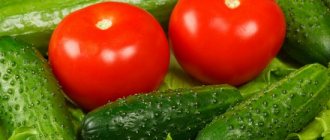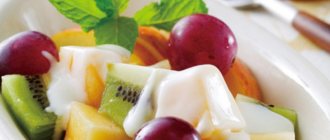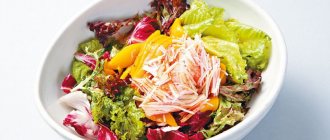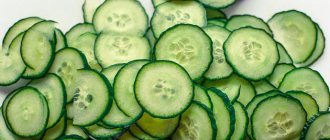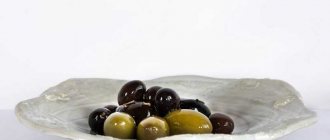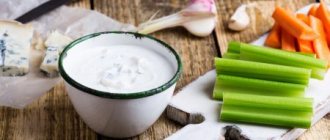Lettuce, also known as green or leaf lettuce (Lactuca sativa L.) is a herbaceous plant of the Asteraceae family, a valuable vegetable crop. The nutritional and beneficial properties of lettuce were known back in ancient Rome. Salad was one of the most popular foods in southern Europe - it was eaten with olive oil and salt, often as a side dish for meat and fish.
Nowadays it is cultivated as a vegetable plant all over the world. There are more than a hundred different species - they differ in the shape and color of the leaves, taste, and growing conditions. They are mainly divided into head and leaf varieties of lettuce. And almost all varieties of green salad are a healthy and tasty food product.
Chemical composition
The enormous benefits of lettuce as a vegetable crop are explained by its rich chemical composition. The leaves of the plant consist of water, fiber, carbohydrates, a small amount of protein and fat.
The composition of green salad contains a lot of useful elements: iron, phosphorus, iodine, cobalt, zinc, sodium, potassium, copper. The leaves contain a lot of vitamin K, which regulates such an important indicator as blood clotting. In terms of vitamin C content, almost all types of leaf lettuce are superior to citrus fruits - lemons and oranges.
Also, lettuce, which contains a lot of carotene and carotenoids, has a beneficial effect on vision. The beneficial properties of green salad are also that due to the high content of folic acid, it is absolutely necessary for pregnant and lactating women, as well as children for normal skeletal formation and bone development.
Application and beneficial properties
Due to the presence of valuable substances in its composition, lettuce is very beneficial for hair, nails, skin and the entire human body in general. Being a natural neuron stimulator, it can replace chocolate, candy, and other sweets. Shows its usefulness in case of increased mental stress and diabetes. Enriches the brain with oxygen, therefore it is recommended for use during hypoxia in children and adults. Other beneficial properties of lettuce:
- the ability to improve the functioning of the heart and blood vessels;
- reducing the amount of “bad” cholesterol;
- reducing the risk of strokes, cancer, heart attack, colds;
- thinning mucus and removing phlegm from the bronchi.
In addition, garden salad can help strengthen the immune system and increase the level of iron in the blood, which is very important for anemia. The medicinal juice of this plant can improve blood composition, enrich it with useful substances, and reduce the amount of sugar. Therefore, doctors recommend using it for diabetes.
Lettuce benefits
For women and men
The benefits of lettuce for the female and male body are almost the same. Lettuce can help cope with insomnia - thanks to the production of special substances that resemble alkaloids in their action. It is recommended for both sexes during serious physical activity. Athletes should eat such a healthy salad because it improves endurance, reduces painful symptoms that appear after exercise, and tone muscles.
If we talk separately about the benefits and harms to the health of women and men, then culture helps the fair sex to equalize hormonal levels, relieve pain during menstruation, and reduce the risk of developing diseases of the ovaries and mammary glands. A man can consume garden greens if there is insufficient sperm production, bald spots on the head, or heart disease. In addition, salad is useful for men because it can protect them from impotence.
During pregnancy and breastfeeding
Pregnancy is a great time to eat lettuce. This plant helps the fetus to form correctly, prevents the development of various defects, saturates the child’s brain with oxygen, thereby preventing the risk of hypoxia in the unborn newborn. Folic acid, which is contained in vegetables, reduces the likelihood of premature birth.
A nursing woman can also eat salad greens. Doctors even strongly recommend doing this, since the plant can improve lactation and the quality of breast milk. The benefits and harms of leaf lettuce for the body of pregnant and lactating women are due to the inclusion of calcium, phosphorus and other nutrients in the culture. Through the mother, future or present, valuable substances reach the child.
Lettuce leaves during pregnancy and breastfeeding
For children
How is leaf lettuce beneficial for young children? Because it is able to strengthen bone composition, improve the condition of teeth, prevent the development of caries, and regulate water balance in the body. Another property, namely, improving concentration, allows you to include this plant in the diet of children with disabilities. Schoolchildren should be given salad leaves if they want to increase their perseverance in class. For all children, without exception, green vegetables will help improve the functioning of the digestive tract. It can be introduced into food after the child turns 1.5 years old.
In old age
Leafy greens are beneficial for the human body, no matter how old he is. It helps older people remove “bad” cholesterol, toxins and waste, calm nerves, and maintain a positive attitude. Being a natural diuretic, it improves the outflow of fluid from the body. Has a mild laxative effect. Not only the leaves are beneficial, but also the juice from the salad. It cleans blood vessels, normalizes heart function, and saves from colds.
In medicine
Research conducted by modern specialists shows that lettuce greens are beneficial for many diseases. It reduces the risk of developing Alzheimer's disease, strengthens the human bone skeleton, and helps normalize the functioning of the digestive system. Due to the presence of minerals, the plant also improves skin condition. However, garden salad is not used in official medicine.
Some doctors, mainly herbalists, may prescribe the use of compass lettuce. This is a wild species of a common garden plant, and in all likelihood is its ancestor. It is recommended for use for insomnia, constipation, myopathy, muscular dystrophy, and various diseases of the genitourinary system. And also for asthma, severe colds, persistent cough - as an analgesic and sedative.
Wild lettuce Kompasny
In folk medicine
The benefits and harms of lettuce are well known to traditional healers. All parts of the plant have medicinal properties: leaves, stems, roots, seeds. From them, herbalists prepare infusions, juices, and decoctions, which are then used to heal a person from diseases. For example, if you want to reduce coughing attacks, they recommend making the following remedy: take 20 grams of leaves, pour a glass of boiling water, leave in a semi-dark place for 2 hours, strain. Apply 50 ml three times throughout the day.
Freshly prepared green or red salad juice is useful for periodontal disease, diseases of the circulatory system, insomnia, insufficient production of breast milk, rickets, constipation, and tuberculosis. You need to take it 3 times a day, 30 minutes before meals. You can extract oil from lettuce seeds by cold pressing; it is no less useful than juice. This remedy helps restore liver health, improve skin condition, normalize sleep, get rid of insomnia and depression. It can be used both externally, during massage, and internally.
Lactuc for leg pain : Mix 50 grams of salad seeds, 50 grams. lettuce leaves, 50 gr. wheat flour and 1 tbsp. spoon of vinegar, place on a gauze bandage. Carefully transfer to lower limbs.
Lactuc for cystitis : pour 100 grams of crushed leaves with a glass of boiling water, leave for 2 hours, strain. Take 100 ml twice a day.
Why you should eat salad every day
In cooking
The popularity of lettuce is due not only to the fact that it is rich in valuable substances and is excellent for treating various diseases. This plant can also be used to prepare salads, soup dressings, pancake rolls, meat dishes, sandwiches, snacks, and sauces. They can be used to decorate plates with various dishes before serving on the holiday table. It goes well with other products - meat, fish, herbs from other plants, vegetables.
Lettuce can also be eaten as an independent dish, seasoned with some vegetable oil (sunflower, olive, etc.), apple cider vinegar or, for example, soy sauce. So that the greens can retain valuable substances, before cooking it is recommended not to cut them, but to tear them into separate pieces with your hands. It is believed that this way it retains much more of its beneficial properties.
Vegetable lettuce salad : Take 2 tomatoes, 2 cucumbers, 100 grams of lettuce, half an onion, 5 olives. Chop everything, mix, season with olive oil. Serve to the table.
Original sandwiches : Chop 100 grams of peeled walnuts, fry in a dry frying pan until browned. Take 2 pears, divide into thin slices, removing the core in advance. Cut into pieces 250 gr. any cheese. Take 4 pieces of bread, put nuts, cheese and pears on top. Cover with lettuce leaves. Place the bread on top again. Put the whole thing in the oven. Bake the sandwiches for 10 minutes. There are sandwiches hot.
Soup dressing : Take green onions, dill, parsley, lettuce and basil, chop, salt well, mash with your hands until the juice comes out. Add 1 tbsp. a spoonful of mayonnaise and 3 tbsp. l. sour cream, mix again. The resulting mixture can be added to borscht, beetroot soup or other liquid dishes, and can also be used to grease black bread before eating - it’s delicious.
In cosmetology
If you prefer to use natural cosmetics, you can treat yourself to the benefits of lettuce products. The plant is excellent for creating masks, homemade creams, and decoctions that can eliminate acne and other skin imperfections. Moreover, it has no contraindications for external use, except for individual intolerance to the individual components that make up the greens. Using lettuce leaves for cosmetic purposes is not difficult. For example, if you have increased hair loss and dandruff, you can rub the juice obtained after grinding the hair into your head. Just need to mix it with honey in advance!
A mask with leaves, beaten in a blender along with half a grated cucumber, and then kept in the refrigerator, is suitable for restoring the natural shine of the skin. If desired, the mixture can be supplemented with 1 raw egg white, 1 teaspoon of lemon juice, 100 grams of chopped fresh mint - the effect will be better. However, please note that before using such a product, you must conduct an allergy test in any way convenient for you.
Universal mask : Tear the leaves, chop with your hands, twist in a blender, mix with 1 tbsp. a spoonful of olive oil and 0.5 tsp. lemon juice, stand for 5 minutes. Apply to skin, rinse with warm water after 10 minutes. The product helps especially well with increased pigmentation.
Lettuce leaves in cosmetology
For weight loss
Since leaf lettuce is low in calories, it can be actively used by women who are losing weight and on a diet. Crispy greens will help avoid the development of intestinal problems, relieve constipation, and saturate the body with valuable substances. Nutritionists recommend including the plant in your daily diet. However, this does not mean that you can eat a full pot of leaves; everything is fine in limited quantities.
Benefit
Experts believe that regular consumption of lettuce, due to its beneficial properties, can prevent the development of Alzheimer’s disease, strengthen the skeleton and bone tissue, improve the digestive process due to its high fiber content, improve the condition of teeth, skin, mucous membranes of the body, and compensate for the deficiency of vitamins and minerals. .
How many calories are in vegetable salads?
Due to the wide variety, the calorie content of salad can only be judged approximately. But even these average indicators will certainly please lovers of a healthy lifestyle and athletic figure. From one hundred grams of salad prepared exclusively from vegetables, you can get 1.42 g of protein (2% of the daily value), 3.70 g of fat (5%), 5.71 g of carbohydrates (2%). With a sufficient content of vegetable fats, the dish has a low calorie content of 57.32 kcal.
But since vegetables are rarely consumed without dressing (after all, a strict diet is the lot of people with exceptional willpower), the calorie content of the salad can increase noticeably.
Vegetable oils are often used as a dressing for dietary dishes. The most popular of them are sunflower and olive. However, do not indulge yourself with illusions! These oils are almost as high in calories as... mayonnaise or sour cream. The ability to maintain slimness and good physical shape is based primarily on moderation. Let’s take a closer look at this concept regarding salad dressing.
Calorie content of salad dressings per 100 g of product (in kilocalories):
- sunflower – 884;
- olive – 898;
- mayonnaise – 680;
- sour cream – from 165 to 295 (homemade is more nutritious, with a high percentage of fat content);
- melted butter, which gourmets also sometimes use to season salads - 717.
Obviously, you can overeat in any case if you do not follow the limit. And a few spoons of supposedly lean vegetable oil poured “from the heart” will do much more harm than a tablespoon of sour cream. So, the culinary and dietary need for vegetable oils is determined more by their rich vitamin and mineral composition and excellent taste than by their low calorie content. Unrefined, cold-pressed oil is considered the most useful in terms of microelements. This product contains the maximum amount of organic acids that can dissolve all cholesterol deposits in the bloodstream. There are also many different vitamins (A, E, D, group B and others).
According to nutritionists, one adult can eat from five to eight servings of light salads. This is approximately 0.4-0.7 kilograms. Of course, vegetables can be eaten without cooking or dressing, in their natural form.
Calorie content
Leaf lettuce, which has very low calorie content - only 15 calories per 100 grams of green leaves - is an ideal dietary product. It is credited with its ability to lower blood sugar and counteract obesity. Due to the high content of ascorbic acid, green leaf lettuce is an excellent antioxidant and resists cell aging.
It is usually eaten fresh - mainly as part of vitamin salads, fresh snacks, and side dishes for various dishes.
Is it possible to give salad to animals?
Lettuce will appeal to rodents, rabbits, hamsters, poultry, guinea pigs, and parrots. Red plants are especially beneficial for them, as they contain iodine. Many pets lack this substance, despite the fact that owners try to buy balanced food. It helps them grow and develop properly.
Lettuce for animals
As for cats and dogs, it all depends on the preferences of the pets. Some animals flatly refuse to eat any greens because they are oriented towards a different diet. The latter, on the contrary, love to eat it, especially if they feel that the body lacks any necessary substances. In order not to guess whether he will eat or not, you can periodically leave some greenery near the feeder. If your pet wants to eat vegetable leaves, he will eat them.
Lettuce is a vital plant
Preparing lettuce for the winter
Wash and dry the leaves first.
There are several ways to prepare a useful product:
- Freezing. It is best to cut the leaves into strips, then place them in plastic bags and place them in the freezer. You won’t be able to use it in salads; you’ll have to prepare omelettes, casseroles, and pureed soups. Thawed salad does not have elasticity and attractive appearance.
- Drying. Young leaves will do. After drying, store in a tightly closed container. Use as a vitamin supplement and for cosmetic infusions.
- Pickling. In this form it is easy to store lettuce in the refrigerator. Prepare the marinade, place the leaves in a jar, sprinkle with chopped garlic, pour in the marinade and cover with oppression. Shelf life is about a month. You can choose the marinade recipe according to your taste. If you need to roll up the jars, the leaves are first fried with garlic and poured with aromatic vinegar.
